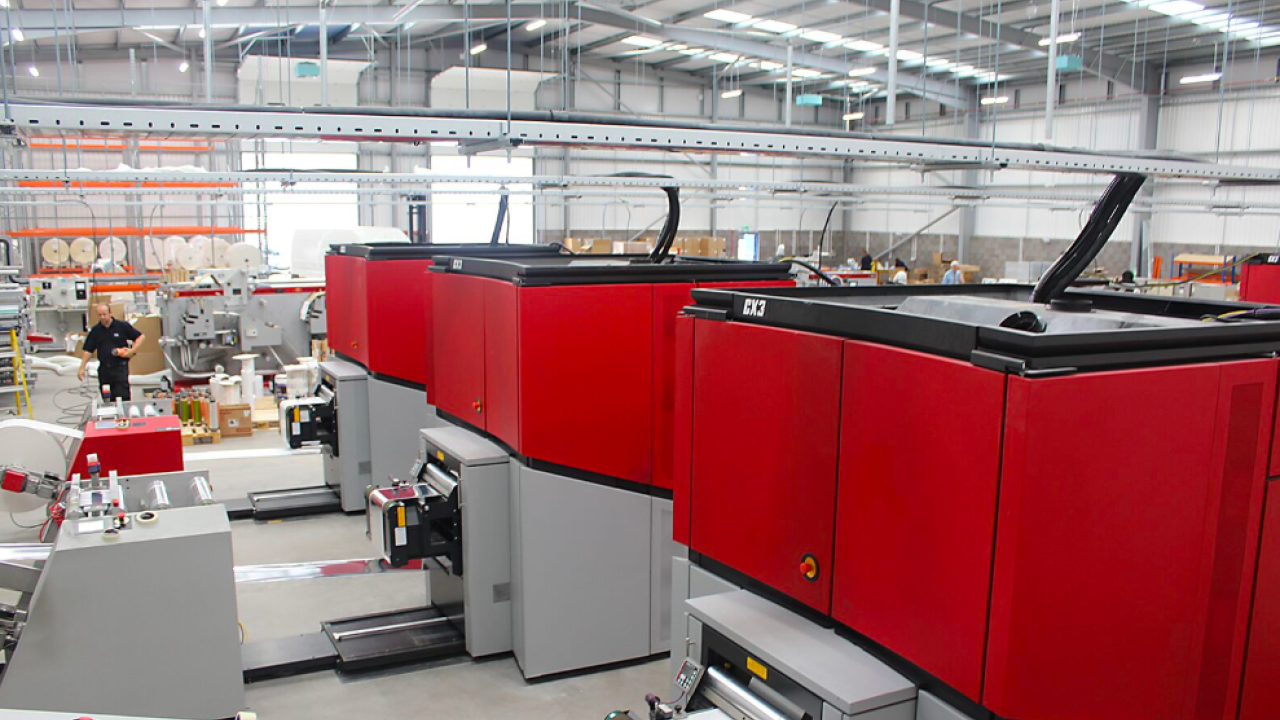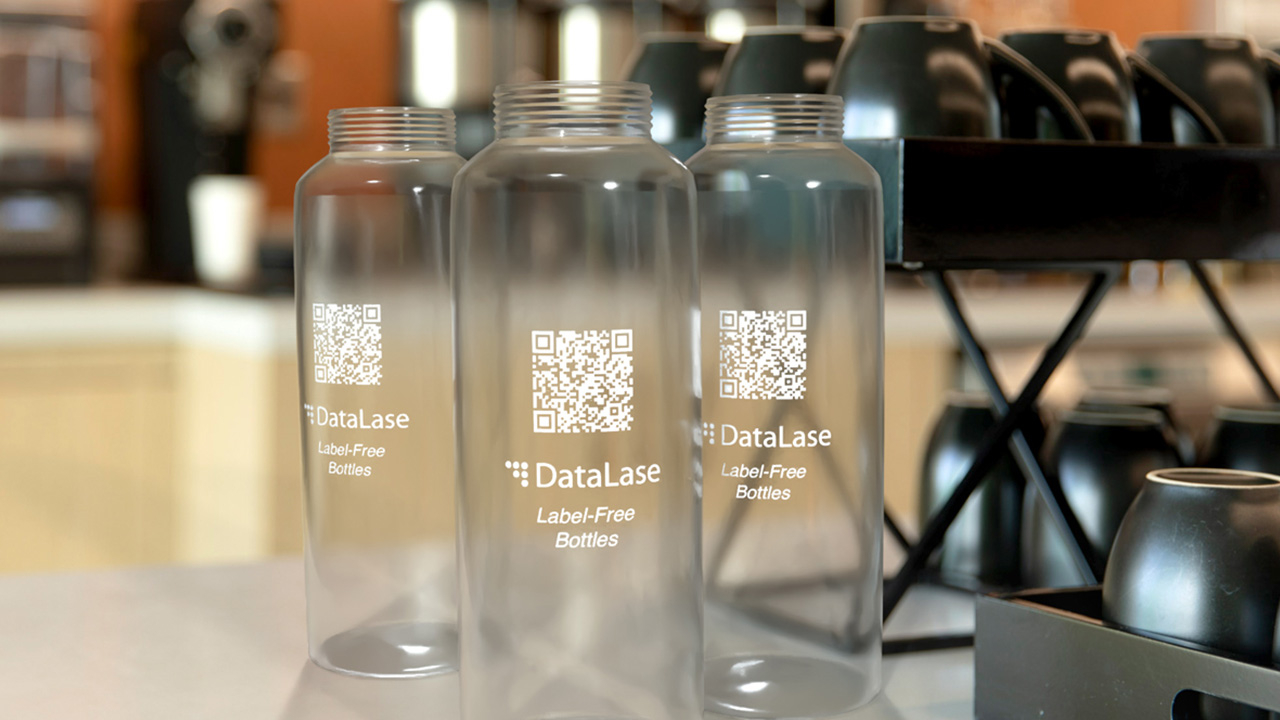Xeikon confirms pouch production

Xeikon’s dry toner technology is longestablished for a number of label, packaging and graphic arts applications, from pressure-sensitive labels, folding cartons and paper cups, to document production and wallpaper printing. With the addition of inkjet to its portfolio via its own Panther presses and the acquisition of the EFI Jetrion business, Xeikon has developed its technology to better serve existing end-use markets (durable and industrial), and expanded into additional applications such as glossy, tactile health and beauty and premium beer labels where the tough and tactile characteristics of UV inkjet lend themselves to these applications.
While the broader term of ‘flexible packaging’ has been previously served using dry toner, notes Filip Weymans, vice president of marketing at Xeikon, pouches have until now been a more challenging addition. The heat involved in fusing the toners has created a barrier to entry, as has the range of multilayer materials seen in pouch production. These are needed to ensure the appropriate barrier characteristics of the packaging but can be difficult to run through the press. Format and material compatibility have further curtailed its use.
Now though, Xeikon has collaborated with UK printer CS Labels to formally establish pouches as a viable option for dry toner using an indirect printing principle.
Pouch production process
This has necessitated a modification to the digital press engine that allows printing on the reverse of a PET substrate, which becomes the outer layer of the pouch. This is then thermal laminated – a dry process – to the inner layer of the pouch completing the packaging structure. The inner layer can be a single or multilayer foil depending on the barrier requirements. This process simplifies the manufacturing by standardizing the substrate to be printed, with no need to ‘full cure’ the laminated construction, and having the flexibility to add any type of barrier without impacting quality and performance.
Weymans explains: ‘Pouch construction can be complicated, with aluminum layers commonplace and functional barriers essential. Such complexity is challenging to the print process.
‘The process that has been developed sees the pouch deconstructed, so simplifying the print process by having a standard type mono-material that needs to be reverse printed before the finished pouch is constructed.’
Simon Smith, managing director at CS Labels, notes: ‘There are a number of challenges to overcome. Heat is one, as are creasing of the material, poor adhesion, material shrinkage and tension. Format size means there are a few jobs we can’t touch with the available web width. Pouches also require a lot of ink coverage so the cost of inks need to be considered. Toner performance can cause issues with refusing and reforming during conversion. And there remain issues in sourcing materials in appropriate batch sizes and in short lead times.
‘We are still exploring the boundaries but our experience has allowed us to reach a point where we are able to offer a real solution to the market, using dry toner.’
CS Labels is a long-time user of Xeikon dry toner presses. It installed its first in 2007 and became an entirely digital printing house in 2012 when its last flexo press was shipped out.
It has achieved great success in labels and is now gearing up for future growth with an expanded portfolio of packaging structures available to its customers. This has included products for both food and non-food applications. It has won awards for these too, with pouches for customer Leisurechem’s Hot Tub Nights aromatherapy crystals a notable triumphant project.
CS Labels runs a fleet of Xeikon CX3 presses, along with a Xeikon CX500, for which CS Labels served as a beta test site. Smith sees this press as integral to his company’s ability to serve the market for digitally-printed pouches. ‘The Xeikon CX500 was a “eureka” moment for us as we knew we could use the technology to develop our flexible packaging business. The beta testing we undertook was of a label press but we were really interested to expand our opportunities in printing flexible packaging.
‘We have moved into flexible packaging as I believe the market is where the label market was in 2007, when we bought out first digital press. At that time, people questioned our investment, saying the technology was too costly, too slow and too unreliable to be successful with.
‘People are saying similar things about digitally printed pouches. We see ourselves as a disrupter and want to challenge the conceptions. You can make a success of it, you just have to think about it differently.’
Partners
Xeikon and CS Labels have turned to other supply chain partners to help make pouches a reality. D&K for example, supplied the laminate that was reverse printed to provide samples shown by CS Labels at the recent Xeikon Café event in Europe. This was laminated to a PET structure supplied by Synthogra. Michelman provides the water-based thermal adhesive that is used to bond the laminate and the packaging structure. This is applied using a Xeikon UCoat.
CS Labels has worked with the converting supply chain to have a 6m-long converting line custom built. This allows it to convert pouches in-house, removing the previously necessary of outsourcing converting.
‘By designing and building our own converting line, we have been able to bring the whole process in-house. This has given us control of the process from origination to delivery of the final product.’
This includes tackling lead times, which traditionally extend to 8-10 weeks using conventional flexible packaging processes.
‘Dry thermal lamination helps achieve a fast turnaround time when converting the packaging,’ confirms Weymans. ‘With conventional processes you have to allow time for solvent-based laminates to fully cure. This contributes to a turnaround time of 8-10 weeks. This is not uncommon in conventional flexible packaging processes but to truly capitalize with digital printing that is too long.’
Smith continues: ‘We are coming to market with a 4-6 week lead time, with the Xeikon CX500 press running at 30m/min and printing at 1200 DPI.’
Food-safe packaging is identified as another option using the dry toner process to create pouches.
The article published in Labels & Labeling issue 3 was written by David Pittman.
Stay up to date
Subscribe to the free Label News newsletter and receive the latest content every week. We'll never share your email address.


